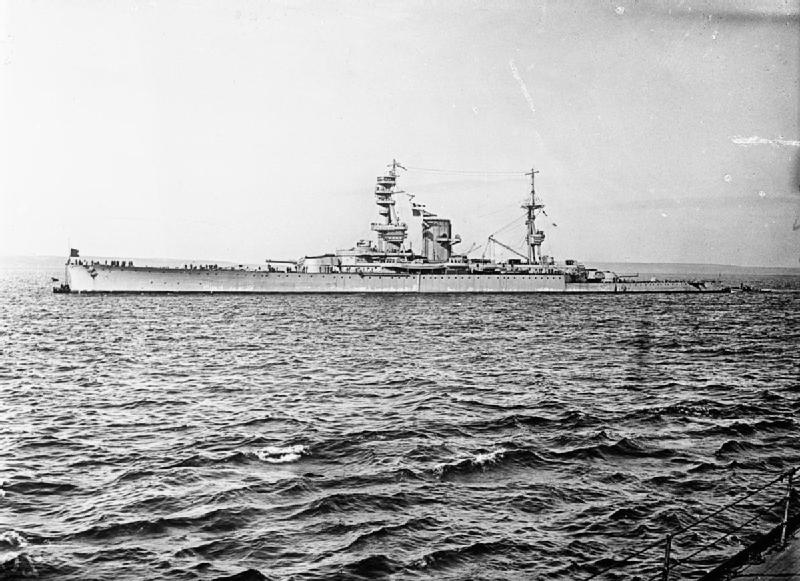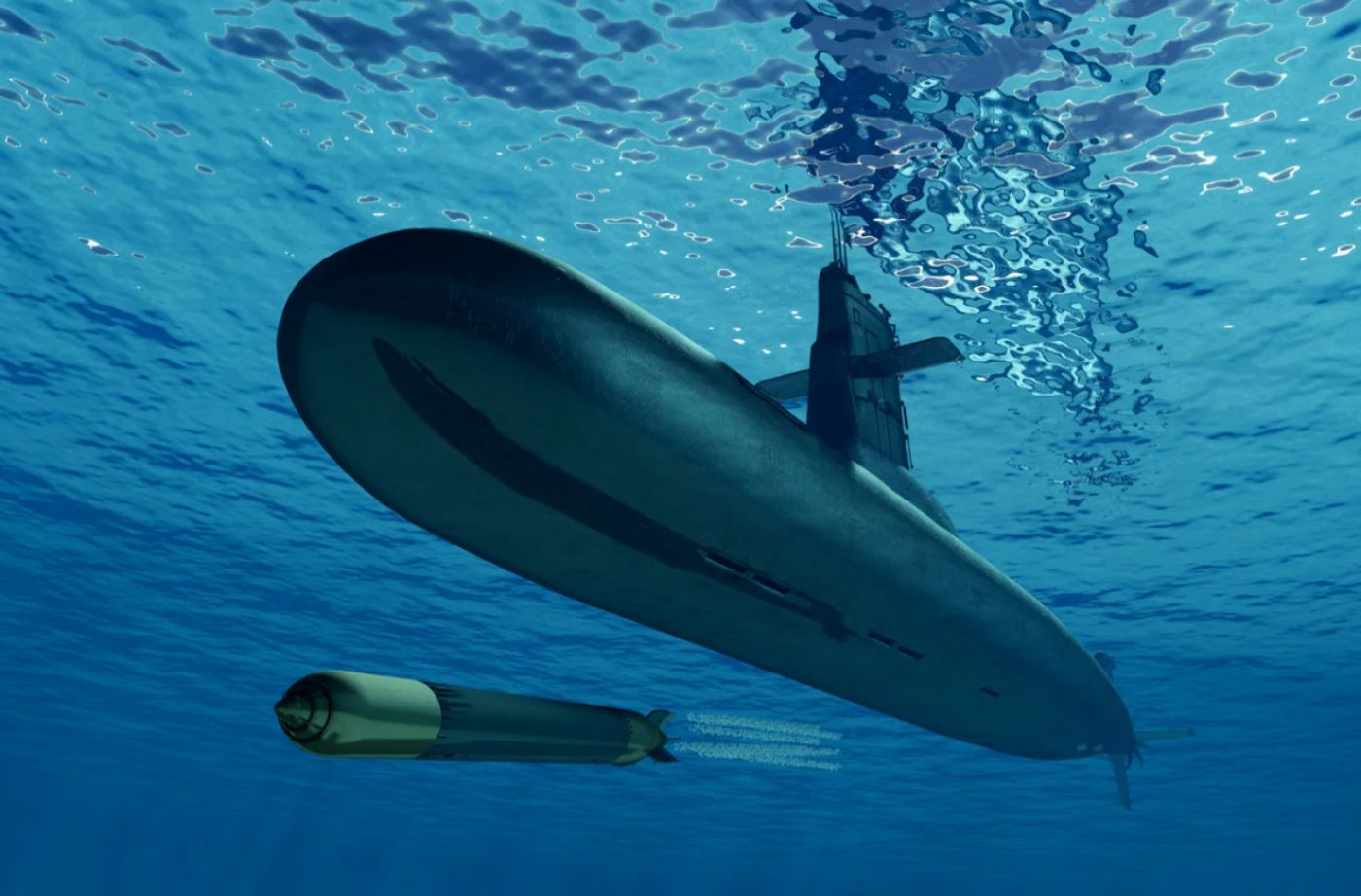This year marks the 85th anniversary of the British aircraft carrier HMS Courageous, torpedoed by the German submarine U-29 during World War II.
This tragic incident not only marked the loss of the first Royal Navy warship to enemy action in the conflict but also made HMS Courageous the first aircraft carrier in the world to be sunk in combat.
On that fateful day, more than 500 brave men lost their lives, and their names are now memorialized at the Naval Memorial at Plymouth, England.
A Ship With A Storied Past
Originally conceived as a battle cruiser, HMS Courageous was the lead ship of her class, designed for the Royal Navy during World War I.
Laid down on March 26, 1915, launched on February 5, 1916, and completed later that year, she patrolled the North Sea and participated in crucial engagements, including the Second Battle of Heligoland Bight in November 1917.
Courageous also witnessed the surrender of the German High Seas Fleet in 1918, solidifying her reputation as a powerful vessel of her time. After World War I, HMS Courageous was decommissioned.
The Washington Naval Treaty of 1922 imposed strict limitations on capital ship tonnage, compelling the Royal Navy to decommission many of its older vessels.
However, the treaty did permit the conversion of certain ships into aircraft carriers, and Courageous, due to her size and speed, was among the candidates for this transformation.

The transformation of HMS Courageous commenced on June 29, 1924, at Devonport and was finished on February 21, 1928. The transformation cost approximately £2,025,800, resulting in a carrier capable of carrying 48 aircraft—an impressive number compared to the 36 carried by her half-sister, HMS Furious.
Courageous featured a significant design overhaul, including the removal of all superstructure, guns, and fittings down to the main deck. A two-story hangar was constructed atop the remaining hull, each level measuring 16 feet high and 550 feet long.
This design included a short flying-off deck, which enhanced the flexibility of launch and recovery cycles until the advent of newer fighters in the 1930s rendered this feature obsolete.
The ship’s fifteen-inch turrets were stored and later repurposed for the Royal Navy’s last battleship, HMS Vanguard.
After her recommissioning, HMS Courageous primarily operated off the coasts of Great Britain and Ireland. Though she briefly served as a training ship, she returned to her operational role in September 1939, just before the onset of World War II.
Participation In World War II
HMS Courageous began her service in World War II as part of the Home Fleet. She carried 811 and 822 Squadrons, each equipped with a dozen Fairey Swordfish biplanes. These aircraft were primarily used for anti-submarine warfare.
In the early days of the war, the Royal Navy formed hunter-killer groups centered around aircraft carriers like Courageous, tasked with locating and destroying German U-boats that posed a major threat to Allied shipping.
On August 31, 1939, just days before the official outbreak of World War II, Courageous moved to her war station at Portland and embarked her two squadrons of Swordfish. On September 3, 1939, the day Britain declared war on Germany, the carrier departed Plymouth for an anti-submarine patrol in the Western Approaches, escorted by four destroyers.
Her mission was to hunt down and eliminate the U-boats prowling the Atlantic, which had already begun targeting Allied vessels. By September 17, Courageous had reached the coast of Ireland, actively patrolling the waters for enemy submarines.
However, the mission took a dangerous turn when two of her four escorting destroyers were dispatched to assist a merchant ship under attack, leaving the carrier vulnerable.

Unknown to the crew of HMS Courageous, lurking beneath the waves was the German submarine U-29, which had been shadowing the carrier for over an hour and a half.
In a fateful maneuver, Courageous turned into the wind to launch her aircraft, unknowingly exposing her entire broadside to the enemy submarine. Seizing the opportunity, U-29’s commander, Captain-Lieutenant Otto Schuhart, fired three torpedoes at the carrier, striking a fatal blow.
Courageous was hit and rapidly began to list and sink, marking the first major U-boat offensive of the war.
Aircraft Carrier Sank Within 20 Minutes
The sinking of HMS Courageous on the night of September 17, 1939, marked the Royal Navy’s first major loss of World War II. The tragedy unfolded quickly, with the German submarine U-29 delivering a devastating blow that sent the carrier to the ocean floor within 20 minutes.
In the aftermath, survivors’ harrowing stories, as reported by The Daily Telegraph, provide a vivid picture of the chaos and courage that defined those final moments aboard Courageous.
Paymaster Sub-Lieutenant I. F. Westmacott, the captain’s secretary, was having supper when he heard the terrifying explosions that seemed to lift the entire ship. “All lights went out, and crockery fell over,” he recalled.
He managed to escape the darkened wardroom and made his way to the seaplane platform on the quarter deck. Though some of the men waiting there did not initially realize the urgency, the order to abandon ship came quickly.
“I stripped and jumped into the water. I was in it for about 40 minutes, swimming all the time, until I reached one of the destroyers. Everybody behaved with calm, and the men cracked jokes. There was no panic or disorder,” he said, reflecting the disciplined resolve of the crew even in the face of imminent danger.

Courageous began listing to port almost immediately after the attack, and within five minutes, Captain Makeig-Jones ordered the crew to abandon the ship.
Survivors described how the carrier’s bow submerged while her stern rose into the air, ultimately sinking within 15 to 20 minutes of being struck. The men struggled to launch lifeboats on the starboard side, but the quick listing rendered the port-side boats unusable.
Among the youngest survivors was 15-year-old Bugler R. D. Emerson of the Royal Marines. Standing just five feet tall, Emerson was on the flight deck when the torpedoes hit. He tied his bugle to the ship’s rail, undressed, and climbed down the side before swimming towards a raft.
Naval Writer Tom Hughes, 18, provided one of the most dramatic accounts, describing how he was in the canteen when the first explosion occurred. After rushing to the deck amid a second explosion and a burst of flames, Hughes and others hurled anything that could float into the water.
He recalled seeing Captain Makeig-Jones standing at the salute on the bridge as Courageous took her final plunge, an image that remained etched in his mind.
Another story came from 16-year-old John Desmond Wells, who was reading in his hammock when the torpedoes struck. He managed to reach the upper deck amid the chaos, slid down the ship’s side, and swam towards a nearby destroyer.
Despite the unfolding catastrophe, Wells noted, “Many men were running about, but there was no panic.” This sense of order and mutual support was echoed by numerous survivors, who sang songs like “Roll Up the Barrel” while awaiting rescue.
Approximately 681 sailors and officers survived the ordeal, while 519 crew members, including the captain, were lost in the incident. In addition to the destroyers, the survivors were rescued by the US cargo ship Collinsgworth, the Ellerman Lines cargo ship Dido, and the Dutch ocean liner Veendam.

Major Success For Germany
In response to the loss of this aircraft carrier, the British Navy made the strategic decision to withdraw its aircraft carriers from anti-submarine patrols.
Courageous became the first British warship to be lost to German forces. For the Germans, this marked a significant early victory that highlighted the vulnerability of even the largest and most powerful vessels in submarine warfare.
Commodore Karl Dönitz, the commander of the German submarine force, described the sinking of Courageous as “a wonderful success,” which sparked widespread celebration within the Kriegsmarine (Navy of Nazi Germany).
Grand Admiral Erich Raeder, who led the Kriegsmarine, ordered that Schuhart receive the Iron Cross First Class while all other crew members were to be awarded the Iron Cross Second Class.
- Contact the author at ashishmichel(at)gmail.com
- Follow EurAsian Times on Google News




